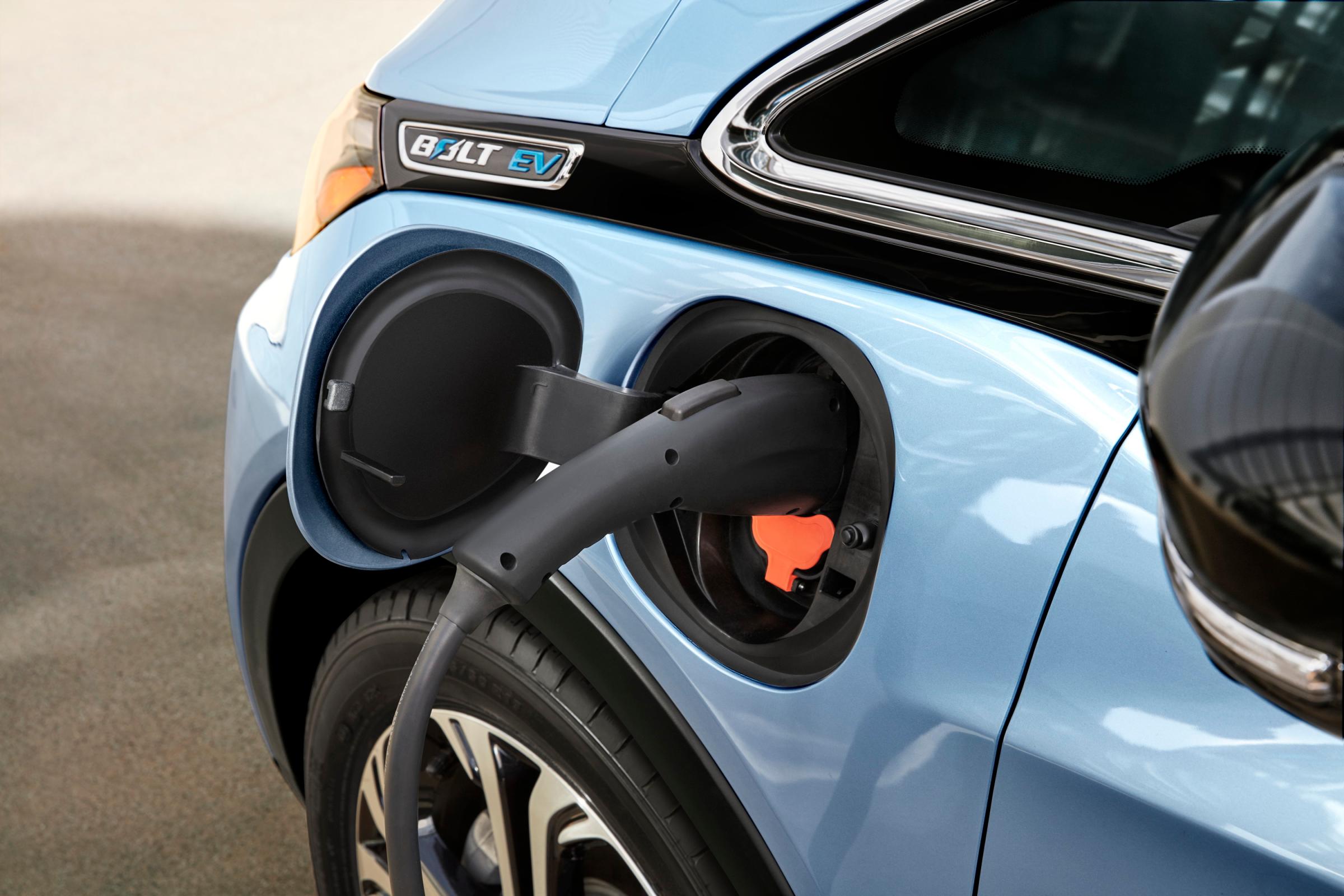
On April 13, NASA made a startling announcement: Underneath its icy surface, Saturn’s moon Enceladus may be home to a chemical reaction that could provide the right conditions for life. “This is the closest we’ve come, so far, to identifying a place with some of the ingredients needed for a habitable environment,” said the space agency’s Thomas Zurbuchen in a statement. The definition of “habitable” depends very much on the kind of life you’re talking about (especially when the potentially life-supporting activity is happening underwater). Human beings aren’t going to be setting up shop on Enceladus anytime soon. Which means we are, for now, stuck on Earth, with its changing climate and all the rest.
It’s a good thing, then, that automakers are getting serious about electric vehicles (EVs). Environmentalists have long hailed such cars as a greener alternative to gas-powered cars. But their viability has been limited by issues like driving range, affordability and the sometimes questionable decision-making of major automakers. General Motors’ Chevrolet Bolt represents a sea-change in all these areas: it’ll do over 200 miles on a single charge, it starts at just $35,000 before federal and state incentives, and the company once accused of killing the electric car is making Bolts readily available to as many customers as it can.
Driving the Bolt feels simultaneously transformative and prosaic. At first, you can’t help but think you’re in a car somehow delivered from the future. I became convinced that EVs are primed to explode in popularity, especially once people realize how much fun they can be to drive. Unlike in a gas-powered car, an all-eletric delivers power the instant you ask for it. The Bolt is like a zippy sports car in economical suiting. And, as with hybrids before it, you start to make a game out of recharging the battery via the Bolt’s regenerative breaking feature that converts some energy into useable electricity.

But after a while, all that world-changing mumbo-jumbo fades into the background. Once you get a feel for it, the Bolt drives like your typical sporty crossover. (One difference: There’s no engine shudder at high speeds, making it easy to absent-mindedly hit the upper 80s in a 55-mile-per-hour zone.) It’s a smooth ride, it’s unexpectedly roomy, and its infotainment system works well with your smartphone.
The Bolt isn’t a head-turner from the outside. That’s not to say it’s ugly, but rather there’s nothing about it that screams “I’m from the future,” a design pitfall that afflicts many electric and even hybrid vehicles. (It looks nothing like, say, GM’s vision for its ground-breaking Volt concept from a few years back.) That, says lead designer Stuart Norris, was an intentional choice: “We very conscious of not wanting to make the car look like a science fair project, which I think many other electrified entries have a tendency to do.”
As accomplished as the Bolt is, it may not be an ideal choice for everybody—the case for any of the currently available EVs, no matter the nameplate. I couldn’t exactly throw an extension cable down to the street from my fourth-floor Brooklyn apartment, for instance. Battery performance can be severely impacted by extreme temperatures, so the Bolt might be fine in San Diego, but less capable in Buffalo. Even with 200-plus miles of advertised range, road trips will require some logistical planning and, probably, compromises.
The Bolt has hidden costs, too. While it’s possible to recharge it via a standard outlet, most buyers will probably want to spend the extra money to install a 240-volt charging station, which will dramatically reduce the recharge time. (The station costs $699 from a Chevy dealership, plus the cost of installation.) On a standard outlet, the Bolt sucks up 4 miles per hour of charging and on a 240 system it charges 25 miles per hour.
But for many drivers, EVs like the Bolt are an increasingly practical choice. The car’s 200-mile range is more than enough for daily commuters, who might also appreciate its one-pedal driving mode in stop-and-go traffic. There are now more than 15,000 charging stations throughout the U.S., and that number is growing. Just this week, the National Park Service announced that it’s partnering with BMW to install chargers in parks across the country. And if anything good came out of Volkswagen’s Dieselgate scandal, it’s that the company has agreed to invest $2 billion in EV chargers across the country.

Some observers have called the “greenness” of EVs like the Bolt into question. They raise good points: If the source of your electricity is dirty (such as coal), then you’re just shifting the pollution point from your internal-combustion engine to some nearby power plant. The mineral mining required to make the batteries on which these cars rely have their own environmental consequences, too. That said, it’s hard to conclude that mass adoption of EVs wouldn’t be a net positive for the planet—even if they’re not necessarily a silver bullet for climate change.
Much has been written about the Bolt representing a make-good for GM’s ill-fated EV1. But that misses the point. The big question about EVs is how much consumers want them. Data that show interest in EVs is remaining steady even as fuel prices drop. That means the race to build mass market electrics might actually add up to meaningful change. For consumers who have really been waiting for an electric car that’s both practical and affordable, the Bolt is the most convincing option so far.
More Must-Reads from TIME
- Why Biden Dropped Out
- Ukraine’s Plan to Survive Trump
- The Rise of a New Kind of Parenting Guru
- The Chaos and Commotion of the RNC in Photos
- Why We All Have a Stake in Twisters’ Success
- 8 Eating Habits That Actually Improve Your Sleep
- Welcome to the Noah Lyles Olympics
- Get Our Paris Olympics Newsletter in Your Inbox
Contact us at letters@time.com